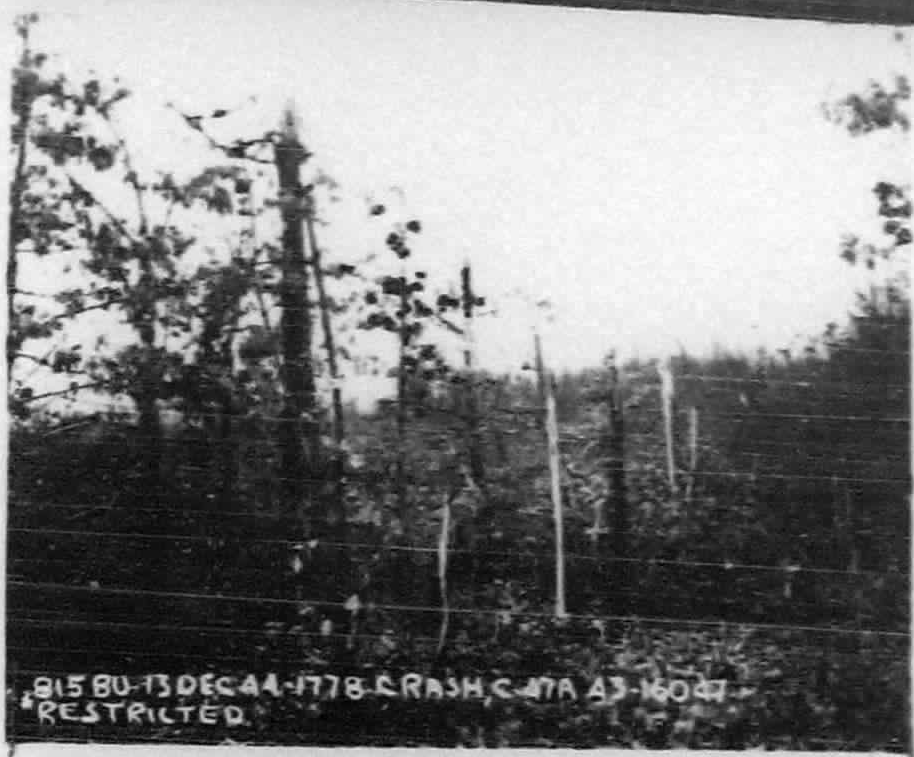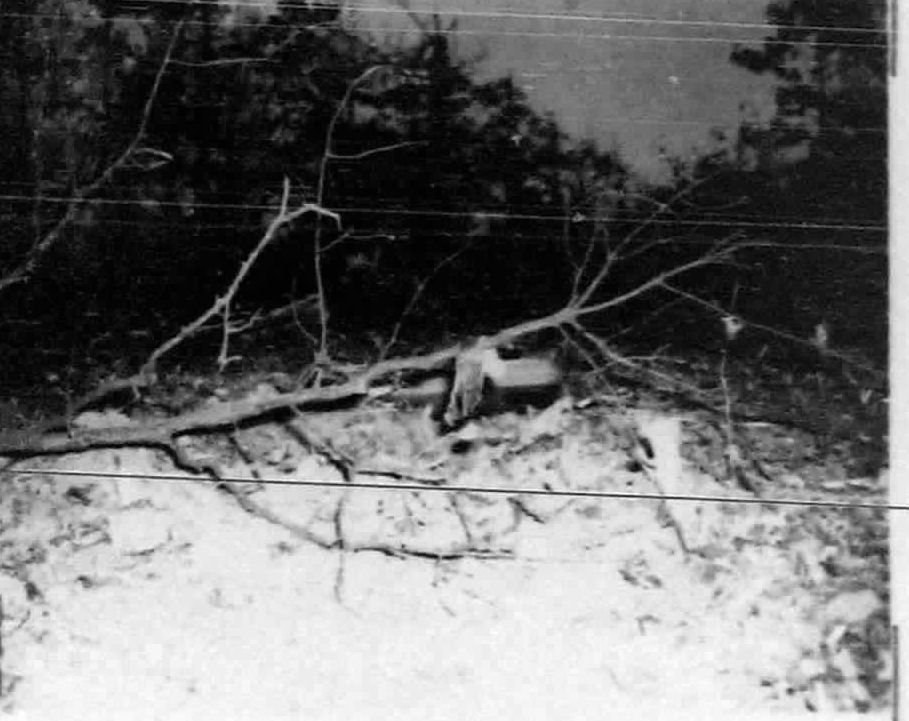A part of my family I know very little about are the Ratay/Ratajs. My great grandma Marie Rataj married Jan Holik. Marie had a brother named Joseph who lived briefly in Chicago like the rest of my Czech ancestors but then after military service (1912-1917), he moved his family to Cleveland, Ohio. I have a few scattered photos of this part of the family but most individuals are not identified. My cousin Emil Rataj/y is one of my military ancestors who was killed in service. This is part of his story.
Emil Paul Rataj was born 11 October 1921 in Ohio to Joseph and Steffee (nee Chaloupka). He was one of four children born to this family. His brothers were:
- Joseph Albert Rataj born 25 December 1916 in Cleveland, Cuyahoga, Ohio. He married Vilma Kralik.
- Aldrich Rataj born 18 May 1918 in Cleveland, Cuyahoga, Ohio. He married Ruth Ridge. Aldrich served in the U.S. Army during World War II.
- Woodrow Thomas Rataj born 23 July 1928 in Cleveland, Cuyahoga, Ohio. Woodrow served during the Korean War Era. He married Judith Huntsman.
Emil’s Brief Military Service

On 14 February 1942 he registered for the World War II Draft in Cleveland, Cuyahoga, Ohio. He enlisted in the U.S. Army Air Forces on 6 April 1943. His ASN was initially 35057948. At that time he was working at the Brost Pattern and Casting Company in North Royalton, Ohio.
2 January 1944 Emil was transferred from Headquarters, Maxwell Field, Alabama to 64th AAFTD, Southern Aviation School, Camden, South Carolina. To report for class starting 17 January 1944 in elementary pilot training. Emil was part of Class 44-G and being moved with Squadron E, Group VIII.1
22 March 1944 Email was a member of Class 44-G of trainees were sent to Basic Flying School. Class would commence on 26 March 1944. Emil was transferred to start school at AAFBFS, Bush Field, Augusta, GA.2
4 August 1944 Emil earned his wings and completed his initial training at Columbus Army Air Field in Columbus, MS and officially became a Flight Officer (F/O) on active duty. At the same time, his ASN changed from that of an enlisted man’s to a Flight Officer and was T-65456. He was then transferred to Squadron T 815th AAFBU in Malden, Missouri.3
13 December 1944 Emil married Mildred Margaret Schreiner before going on an overnight flight on a C-47 on which he was Killed. Emil was to receive his 2nd Lt. Commission a few days later. Mildred was staying in town about 20 miles from the base so she could be with him when he was promoted.4

Accident Description
2nd Lt. Robert M. Moser and his crew took off from Malden, A.A.F. at approximately 0030 hours, 13 December 1944, in airplane #43-16047 after completing 3 hours and 15 minutes of glider tow under the supervision of his instructor, 1st Lt. Guy C. Wallis. The mission was to be a routine training flight to complete two hours of optional flying time.
One hour and 45 minutes later, aircraft #43-16047 crashed two miles northeast of Zalma, Missouri, in a rough wooded area. The crash and resulting explosion attracted the attention of Mr. L.A. James and his wife who live a mile and a half from the scene of the crash and were nearest inhabitants. Mr. James investigated and reported the crash to this station. There were no witnesses that saw the actual crash. Mr. James stated that both he and his wife had heard an airplane flying over his house a few minutes prior to the time of the crash but they had not heard anything unusual, such as an airplane flying extremely low or having engine trouble.




The scene of the accident gave very little evidence as to the possible cause or causes that resulted in the crash. The plane flying from north to south at a speed estimated by the Accident Board to be between 180 and 200 MPH hit the tree tops in a left wing low altitude of 45 degrees or more, sliced through 36 yards of trees, glanced from the top of the first ridge, shown in accompanying diagram (In Air Force Accident Report), and exploded upon impact with the next ridge. While the apparent altitude of the airplane was left wing low, the direction of travel was straight forward, more or less eliminating the possibility of a spiral.
Read Emil’s Air Force Accident Report.5
Members of the crew Killed in the crash
Pilot – 2nd Lt Robert M. Moser, O-829532
Co-Pilot – Flight Officer Emil
AE – Engineer CPL William H. Schauss 35732429
RO – Radio Operator CPL Kenneth H. Newell 39208274
Individual Deceased Personnel File
Emil’s IDPF is only 12 pages long.6 He was married only a few hours so his legal next of kin was still listed as his mother. As the plane exploded, it’s unlikely any of the four crew were able to be properly identified, yet Emil’s IDPF shows a $100 charge for a casket and a $15 charge for embalming. After a fiery crash, it’s unclear what would have remained to embalm or casket. It’s likely for each man casketed, a set of remains was placed into the casket not fully knowing if it was the correct man. there are no documents showing any type of identification by authorities or Graves Registration. Although it is likely a Graves Registration didn’t exist stateside to handle these types of deaths.
Obituary
Flight Officer Emil P. (Rataj), residence. North Royalton, O., beloved husband of Mildred (nee Shreiner), son of Joseph and Steffie; brother of Joseph, jr., W. O. J. G., Aldrich F., U. S. Army in England, and Woodrow T., suddenly Dec. 13, 1944, at Malden, Mo. Friends may call at Searles & Bassett Funeral Home, corner State and Royalton rds., Royalton, after 10:30 a. m. Saturday and until 12 noon Monday. Services at the Baptist Church, Royalton rd., Monday, Dec. 18, at 2 p. m. Member of the Clark K. of P. Lodge No. 764, the Patternmakers Association of Cleveland and Czechoslovak Society of America, Cleveland Chapter No. 219.
Burial
Emil was buried in North Royalton, Ohio Cemetery, Sec B lot 310 4, on 18 December 1944.
Would you like to research your veteran? I can help!
If you’d like help researching your WWI, WWII, Korea, or Vietnam veteran or writing their story, let’s chat. I offer free phone consults for potential new clients. Email info@wwiirwc.com to get started today!
© 2025 World War II Research and Writing Center
- Special Order #2 dated 2 January 1944. HQ Maxwell Field, Alabama. National Archive, College Park, MD. ↩︎
- Special Order #59 dated 22 March 1944. HQ 64th Army Air Forces Flying Training Detachment, Southern Aviation School, Camden, SC. National Archives, College Park, MD. ↩︎
- Special Orders #197 dated 4 August 1944. HQ Columbus Army Air Field, Columbus, MS. National Archives, College Park, MD. ↩︎
- Arkansas, Arkansas, County Marriages, 1837-1957, , database with images, FamilySearch (https://familysearch.org/ark:/61903/1:1:NMVR-NXF : 9 March 2021), Mildred Margaret Schreiner in entry for Emil P Ratay, 12 Dec 1944; citing Marriage, Greene, Arkansas, United States, county offices, Arkansas; FHL microfilm 2,171,099, ; digital images, FamilySearch (http://familysearch.org : downloaded 2 February 2022). National Archives at Washington DC; Washington DC, USA; Applications for Headstones for U.S. Military Veterans, 1925-1941; NAID: A1, 2110-C; Record Group Number: 92; Record Group Title: Records of the Office of the Quartermaster General, application for Emil Ratay death 13 Dec 1944. ↩︎
- Air Force Accident Report for Aircraft #43-16047 dated 13 December 1944. Maxwell Air Force Base, Maxwell Field, AL. ↩︎
- “IDPF for Emil Ratay, SN T-65456,'” Killed on a training flight 13 December 1944, National Archives, 92: Records of the Office of the Quartermaster General, National Personnel Records Center, St. Louis, MO. ↩︎









